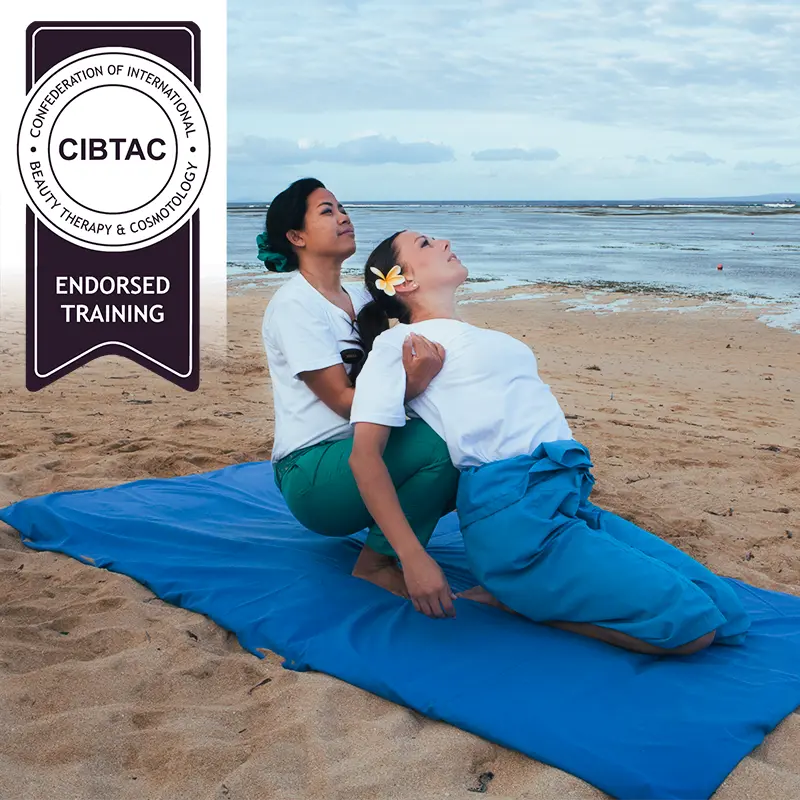20 Days CIBTAC Certificate in Body (Swedish) Massage + CIBTAC Endorsed Thai Massage with Herbal Pack & Foot Stick
Discover the perfect balance of East and West in this intensive 20-day massage training program in Bali.
You’ll graduate with two internationally respected qualifications:
- CIBTAC Level 3 Certificate in Body (Swedish) Massage
- CIBTAC Endorsed Certificate in Thai Massage with Herbal Pack & Foot Stick
This hands-on course blends the flowing, therapeutic techniques of Swedish massage with the energizing movements of traditional Thai massage, enhanced with warm herbal compresses and reflexology tools. Perfect for beginners or wellness professionals looking to expand their skills with accredited, globally recognized credentials.
Price: $3280.00
Upgrade to receive a CIBTAC qualification
Schedule: Monday to Friday, 9.00 AM – 4.00 PM
The Next CIBTAC exam is in October 2025, Registration for these exam will be open from April to June 2025. Course start in September 2025 |
Saturday and Sunday time to enjoy all the splendours Bali has to offer
“The Island of the Gods”
What’s Included
- Comprehensive Training Manual
- Anatomy & Physiology E-Learning Access
- Swedish & Thai Massage Training Video
- All Necessary Products, Tools & Equipment
- Clients for your practical sessions
- Theory & Practical Exams
- CIBTAC Endorsed Certificate in Thai Massage with Herbal Pack & Foot Stick
- CIBTAC Level 3 Certificate in Body Massage
Who Can Join?
This program is ideal for:
- Beginners with no previous massage experience
- Spa and wellness professionals looking to diversify their skillset
- Yoga instructors, bodyworkers, or holistic practitioners wanting to deepen their client offerings
- Anyone ready to begin a career in the healing arts with CIBTAC-accredited certification
Contact us for more information

